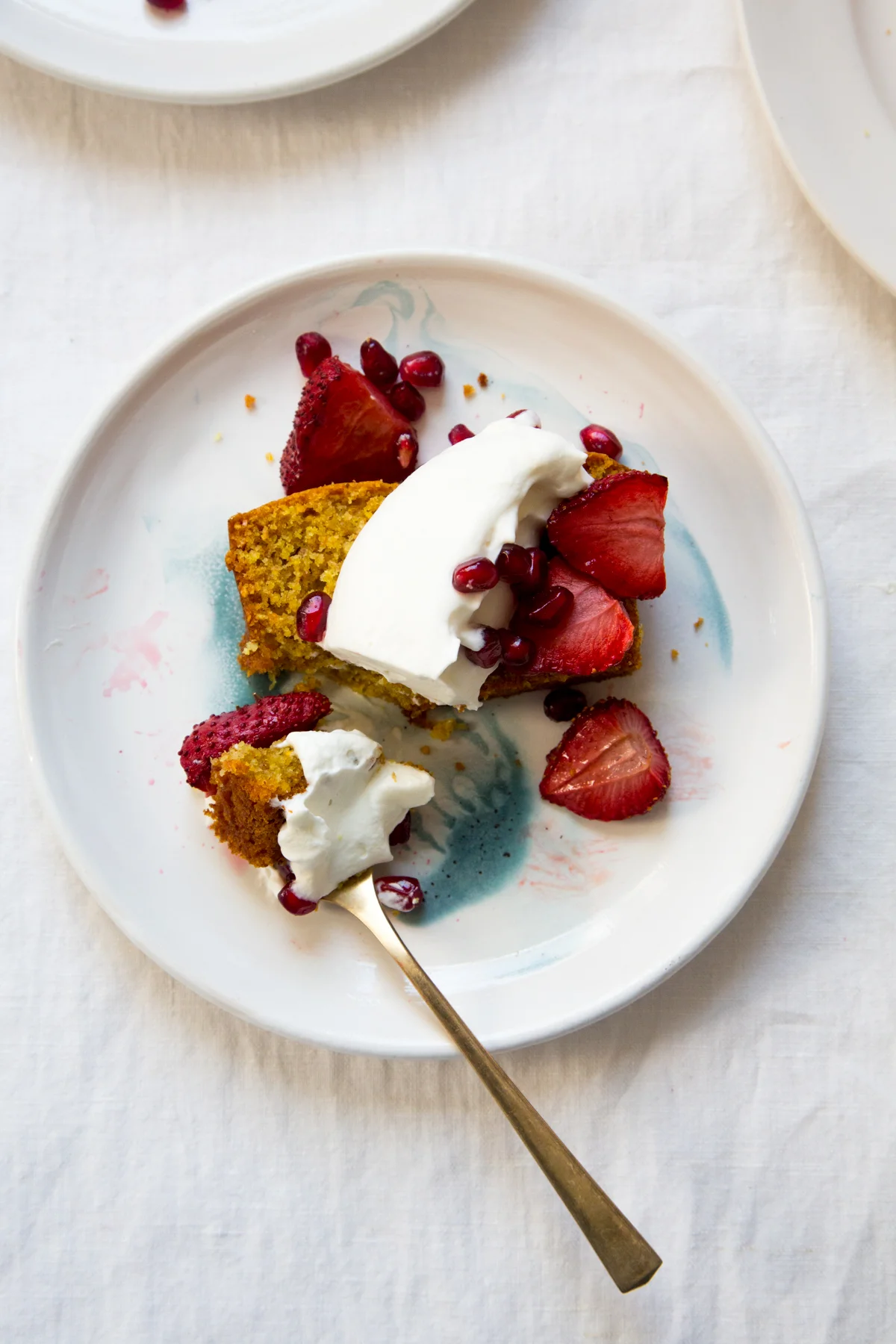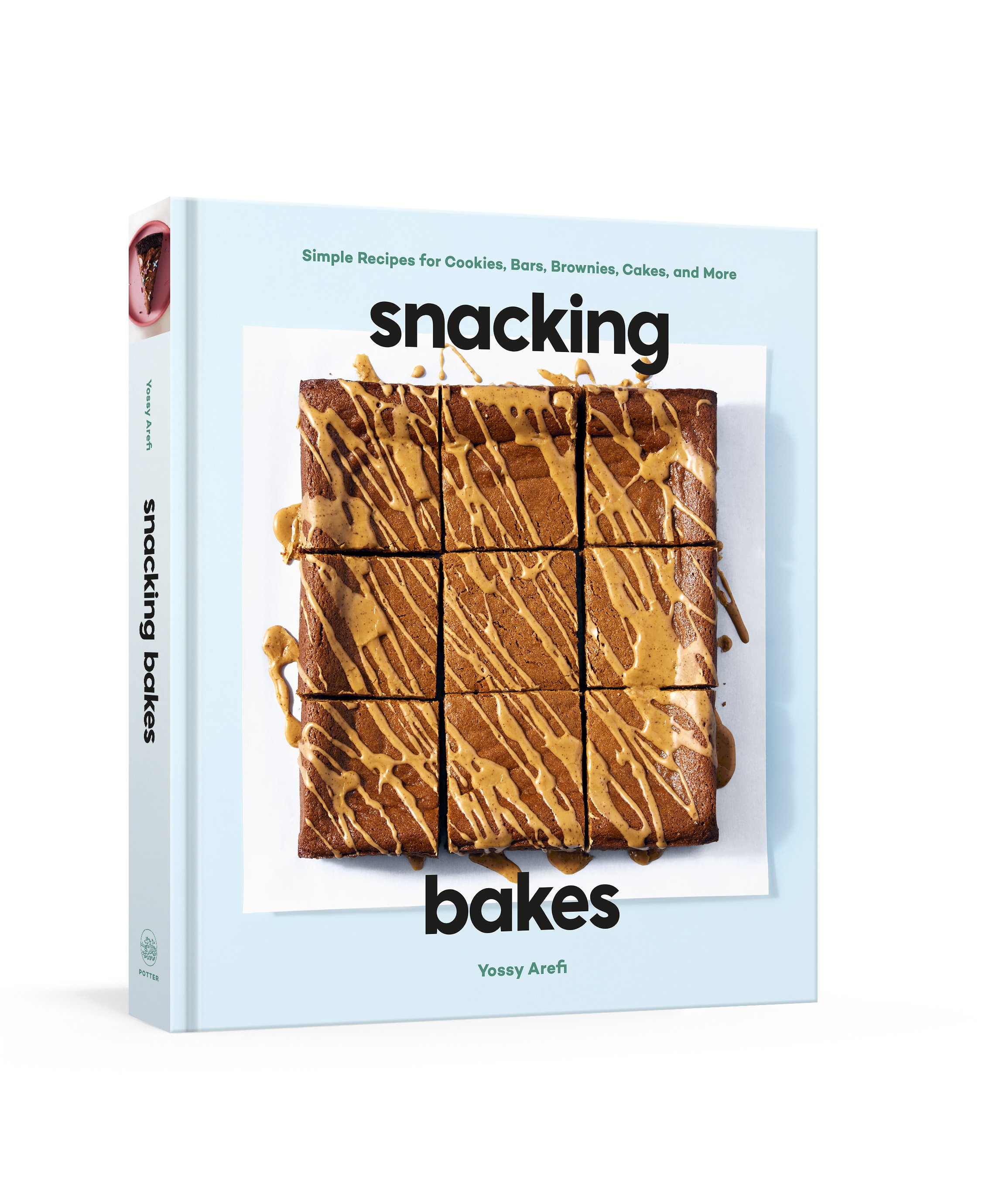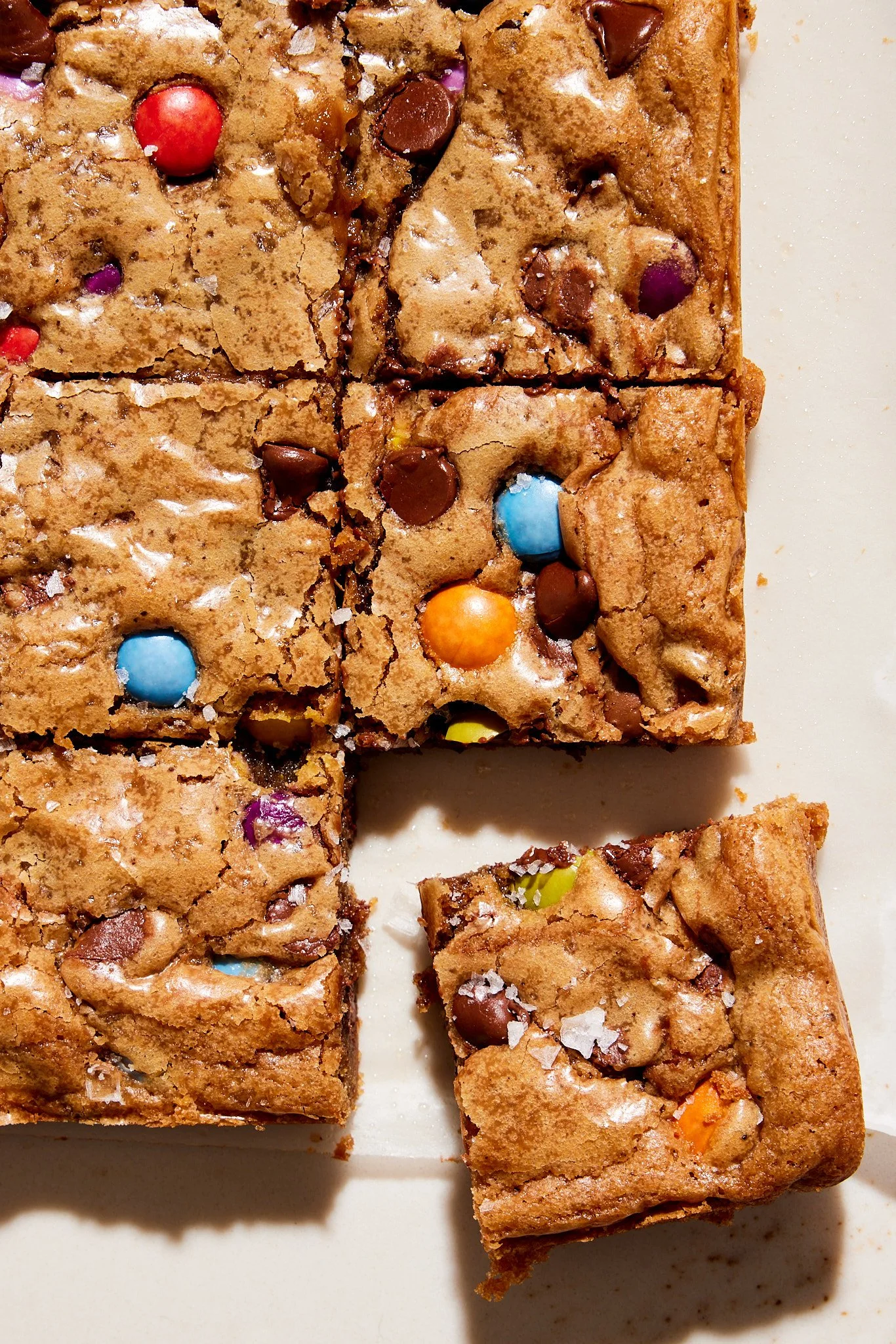Vanilla Cornmeal Cake with Roasted Strawberries | First Mess Cookbook GIVEAWAY
/I have been trying to Kondo-punt (thank you Molly for this phrase) a lot of cookbooks out of my life recently due to the extremely saggy shelves they are currently occupying. BUT, I have been patiently waiting for this book - The First Mess Cookbook by Laura Wright - since I had the chance to test a couple of recipes from it last year. After testing those recipes I knew that the book would be amazing, and it truly is. Every page is totally packed with inviting recipes and photography that makes me want to dive right into the page. Not that I expected anything less from Laura.
There is a lot of noise online, but Laura's voice always breaks through. Hers is one of the blogs that I have read and enjoyed most consistently in my many years of blogging, and her table is the one that I most often find myself wishing I had a seat. I'm not vegan by any stretch, but Laura's recipes are always SO approachable and I always appreciate her no-nonsense/no judgement approach to plant-based eating and cooking which she has perfectly translated to this book.
I love a cornmeal cake, and this one sweetened with maple syrup and topped with roasted strawberries was so simple to make and so satisfying. The recipe calls for it to be made in a round cake plan, but I was feeling the slices and baked it in a 4x10-inch loaf pan instead. Then, I ate slices of cake with my coffee every morning until it was gone.
GIVEAWAY: I am so excited to give one away a copy of this stunning book to one of you lucky folks! Just leave a comment on this post with what fruit or vegetable you are most looking forward to this Spring. I"ll pick a winner at random in a week and the book will ship after it's officially published on March 7. Open to US and Canada only, sorry international folks!
UPDATE: The winner has been notified. Check your email, it might be you! If it isn't, you should buy the book anyway ;)
A Few Announcements
Just two spots left for my workshop with Olaiya Land in Paris this Spring. Check out the details HERE!
AND
OMG Sweeter off the Vine was nominated for an IACP Cookbook Award, and it's up against Mark Bittman and America's Test Kitchen so I have zero chance of winning (hello, underdog!), but damn is it exciting. This is the big time guys, and I am so surprised and thrilled to be nominated!
You guys also nominated it as a Community Pick in Food52's Piglet Tournament of Cookbooks, thank you! It's such an honor, and much less nerve-wracking than being in the actual bracket!
Now let's have some cake!
Vanilla Corn Cake with Roasted Strawberries
Reprinted from The First Mess Cookbook by arrangement with Avery Books, a member of Penguin Group (USA) LLC, A Penguin Random House Company. Copyright 2017, Laura Wright.
Makes one 9-inch (23 cm) cake
¾ cup (175 mL) full-fat coconut milk
1 teaspoon (5 mL) fresh lemon juice
1 cup (250 mL) cornmeal (not coarse)
1 cup (250 mL) whole spelt flour
1 teaspoon (5 mL) lemon zest
1 tablespoon (15 mL) aluminum-free baking powder
¼ teaspoon (1 mL) baking soda
1 teaspoon (5 mL) fine sea salt
½ teaspoon (2 mL) ground turmeric (optional)
½ cup + 2 tablespoons (125 mL + 30 mL) pure maple syrup
½ cup (125 mL) sunflower oil, plus extra to grease pan
1 teaspoon (5 mL) vanilla bean paste OR pure vanilla extract
roughly 1 quart (4 cups/1 L) whole strawberries (smaller berries are preferable)
Whipped Coconut Cream for serving (optional)
1. Preheat the oven to 350°F (180°C). Lightly grease a 9-inch (23 cm) round cake pan with sunflower oil. Cut a circle of parchment paper to fit in the bottom of the pan and press it in. Lightly grease the parchment, and set aside.
2. In a medium bowl, whisk together the coconut milk and lemon juice. Let this mixture sit for 5 minutes so that the milk can curdle slightly.
3. In a large bowl, whisk together the cornmeal, spelt flour, lemon zest, baking powder, baking soda, sea salt, and turmeric, if using.
4. Make a well in the center of the cornmeal mixture. Add the maple syrup, sunflower oil, vanilla, and coconut milk mixture. With a spatula, gently mix until you have a smooth and unified batter. Avoid overmixing.
5. Scrape the batter into the prepared cake pan and slide the pan into the oven. Bake the cake for 25 to 28 minutes or until the top is golden and a toothpick inserted into the center comes out clean. Let the cake cool completely. Raise the oven temperature to 400°F (200°C).
6. Cut the strawberries into halves or quarters (depending on size), and place them on a parchment-lined baking sheet. Slide the baking sheet into the oven and roast the strawberries until they become juicy and jammy, about 20 minutes.
7. Serve slices of the corn cake with a few roasted strawberries and some Whipped Coconut Cream (page 271) if you like.




























